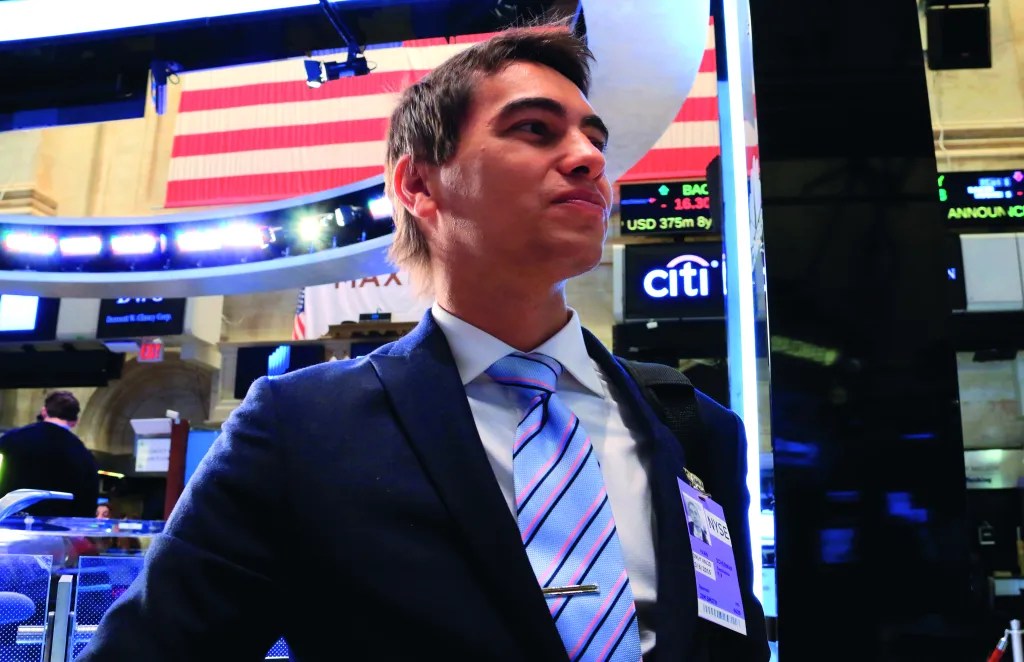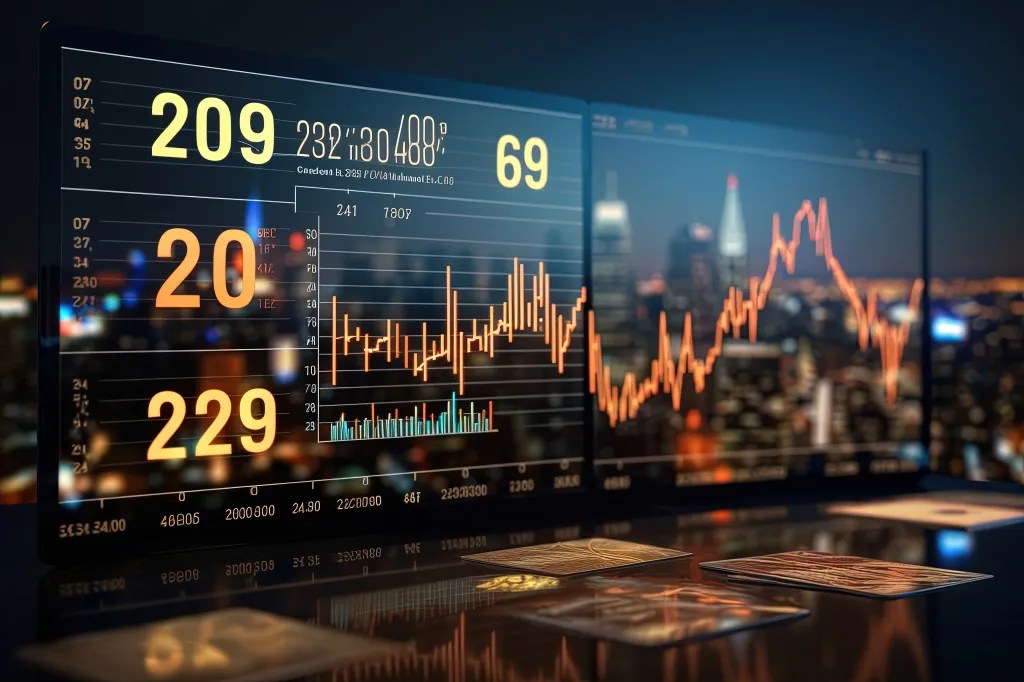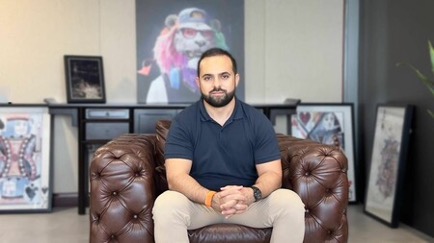Meet the mind behind the money machine
BRANDVOICE
Argentinian financier Ivan Scherman, of Emerge Funds Investments was recently crowned top trader in the 2023 World Cup Championship of Futures Trading competition. The experienced funds manager here unpacks his algorithmic and robotic trading systems that returned almost 500% during the challenge, tells how data was a key component and how his systems help prevent him “betraying himself”.

It’s a trope – that image conjured of the sharp Wall Street trader who makes billion-dollar decisions in the blink of an eye, cutting and weaving with the flow of the market, buying and selling on their gut instincts. And while there are plenty of traders out there who operate that way, Emerge Funds’ Ivan Scherman isn’t one of them.
For a start, the investment firm’s CIO begins his day with 30 minutes of meditation.
He often ends it the same way. He practices martial arts, Muay Thai and boxing and equestrian sports, because, he says it helps him follow routines and build discipline.
“If you have no discipline in trading, you are out of the business,” he says. “It helps you to control yourself from doing stupid things. Martial arts can teach you to learn emotional control. It makes you more mentally stable.
If you’re fighting and you’re thinking about [something else] you’re going to be hit.
You will learn the hard way,” he laughs.
But let’s back up a moment. We’ve all heard Sun Tzu-inspired trading philosophies, and conflict as an analogy for dealing with market vagaries before. Scherman, however, is an expert in algorithmic and robotic trading systems. He relies on crunching data to detect historical patterns in markets, which he then analyses scientifically. By determining the outcome of these patterns, he then develops systems to detect them as they reappear in real-time.
He’s not talking conflict and emotion, deception, feints, and bravado, he’s looking at data and analytics – it’s actually the antithesis.
To describe his thought process simply, the patterns he says he detects are caused by conditions in the market. His assumption is that if the same patterns reappear, market conditions are, ergo, similar and the outcome should also be the same, or similar.
Hence if the market goes up after a certain set of patterns appear it is a signal if, it reoccurs, to buy; if it’s the opposite, it’s a signal to short.
That’s the simplified version, obviously the reality of the trading systems Scherman employs are far more complex but that’s the basic principle he says led him to win the World Cup Championship of Futures Trading.
Taking a deeper dive, Scherman will often take two opposite positions in market using different logics.
“For example, if I’m trading a system that is based on a weekly timeframe, and this trend-following system opens a long position that is supposed to take advantage of a move to the upside, but at the same time or [perhaps] two days later, one short position is open from another system, let’s say a system that trades on a daily timeframe… that second system, is going to offset the swings to the downside that the trend-following system is going to have… because nothing goes up nor down in a straight line. Everything moves in swings,” he says.
“What I’m trying to take advantage [of] by trading different systems, different timeframes and different directions, is to try to neutralise the movements against a [particular] position I have.”
Ultimately, in theory, the losses of one system are going to be neutralised by the profits from the other – a sophisticated approach to diversity.

Scherman maintains that by trading systems based on patterns, you can determine scientifically the probabilities of success and at the same time, you determine in advance what your future risk is going to be by examining how your pattern has behaved in the past.
Winning edge
The championship Scherman won was launched more than 40 years ago. He says last year there were around 5,000 participants worldwide.
One of his mentors, New Zealand trader Tim Rea is a competition alumnus, as is Larry Williams who, significantly, won in 1987 with an 11,376% net return.
Competition rules state the trades need to be done in real time with real money during the course of a year.
Scherman obviously wanted to win the competition but equally he wanted to demonstrate consistency – to show what could be achieved without unnecessary volatility.
“I needed to show something smooth, something that is not very volatile, something that didn’t have a very high deviation,” he says.
“I wanted to show that I’m not a cowboy, but I am able to get the best combination between risk and reward.”
That’s why, while achieving nearly a 500% return in one year was an achievement, Scherman takes greater pride in the fact he only experienced a negative 26% drawdown and it only lasted one month. Ultimately, he believes that “only good risk management allows for sustained gains over time and in any market situation.”
“I’ve built myself as a trader this way. Therefore, the success of my work hinges on risk management; it’s better to leverage compound interest from good profits over many consecutive years than to have one exceptional year followed by several bad years”, he says.
According to Scherman, this perspective has led his flagship fund to have achieved 16 positive years and only one negative.
When asked does he apply the same methods to his clients’ investments as he did during the competition, he says, yes, it’s the same process, but with a major caveat – the risk factor.
There are levels of volatility Scherman says he is willing to accept when investing for himself, that he’s not willing to take for his company’s clients. He says he’s acutely aware that Emerge Funds services institutional investors who will not accept that same kind of leverage.
Emerge Funds was started as a family office back in 2007, automated trading followed, and the firm was labeled as a large trader by the US Securities and Exchange Commission in 2014. The company’s flagship portfolio was structured as an ETP and listed on the Vienna Stock Exchange last year. Headquartered in the BVI and with branch offices in Bolivia, Brazil and Dubai the firm is currently in the process of applying for an Australian Financial Services Licence (AFS) in order to be able to distribute the product to Australian investors.
The advantage of robots
One of the most important points, Scherman makes about the way he trades is that he’s not “creating anything” with these systems, these algorithms, he is, as he puts it “just discovering what is hidden in the data.”
“I’m trying to find out what’s in the nature of the assets we’re trading,” he says. And it’s from here where the robotics come in.
“I have to translate it into rules, a set of conditions that should be met which must be understood by a machine. When I explain to the machine that it should look for an uptrend, I have to explain to it what I understand as an uptrend and how I define it?
“Once I find a pattern, I translate it into rules, I program those rules which is [ultimately] going to be a system with defined entry rules, exit rules, and stop-loss rules, so the computer can understand what to look for, and what direction to take.”
To illustrate how complex this is, imagine for example, trading 15 different assets, trying to remember 200 patterns, with 200 sets of entry and exit conditions. As Scherman points out, you would need “an army just to do it” and on top of that, there would be an almost certain possibility of making human mistakes.
“What I try to avoid is having those human mistakes, having my psychology involved in the trading decisions. That’s why I use robots,” he says.
“You take the emotional aspect out of the trading. If you are trading based on your feelings, your emotions, you are much more open to mistakes. And to betraying yourself.”
Scherman uses another sporting analogy to help contextualise this concept of the power of the singularity of process.
“I’m a showjumper,” he says. “I do it twice a week. When I’m jumping with my horse, my mind should be there with the horse and without thinking about anything else. Because if the horse detects that I’m not concentrating, and if I’m not mentally with the horse, this relationship would break.
“I must transmit to the horse what I want. He or she must understand what I want because at that moment, we are [one] champion.”
This article represents the views only of the subject and should not be regarded as the provision of advice of any nature from Forbes Australia. The article is intended to provide general information only and does not take into account your individual objectives, financial situation or needs. Past performance is not necessarily indicative of future performance. You should seek independent financial and tax advice before making any decision based on this information, the views or information expressed in this article.
This story featured in Issue 10 of Forbes Australia. Tap here to secure your copy.

